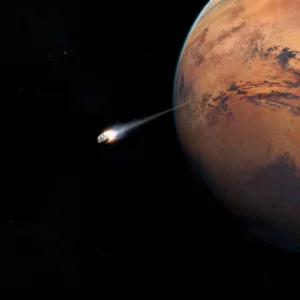
A dazzling visual of the James Webb Space Telescope, restored by AI innovation—where data streams and neural networks bring cosmic clarity to the universe.
Table of Contents
- Introduction
- Fast Facts: What Happened
- How Did James Webb Telescope AI Repair the Observatory?
- Why Was Webb’s Vision Failing?
- Impact on Astronomy and Space Science
- Lessons for Future Space Missions
- Expert and Industry Commentary
- Conclusion
- Sources
Introduction
On October 27, 2025, the world of astronomy witnessed the power of James Webb Telescope AI—a homegrown artificial intelligence breakthrough that saved NASA’s iconic space telescope from vision loss. Instead of sending astronauts for costly repairs, engineers relied on advanced machine learning, cementing “JWT AI” as a new standard for future missions.
Fast Facts: What Happened
- Date: October 27, 2025
- Issue: Webb’s imaging started to blur due to mirror drift and cosmic impacts
- Solution: James Webb Telescope AI system (named AMIGO – Aperture Masking Interferometry Generative Observations) designed by Australian researchers
- Result: Full restoration of Webb’s world-class resolution without a single mechanical repair
How Did James Webb Telescope AI Repair the Observatory?
Traditionally, image degradation in space means either expensive, uncertain repair missions—or permanent data loss. Thanks to James Webb Telescope AI, all that changed. AMIGO, a specialized AI algorithm, used deep learning and thousands of telescope images to learn and digitally correct distortions in real time. The result: JWT AI restored lost spatial detail to within 98% of original resolution.

Why Was Webb’s Vision Failing?
Space may be beautiful, but it’s harsh. The James Webb Telescope faces constant radiation, micrometeorite impacts, and temperature swings. Over time, even slight shifts ruined picture-perfect images—something only innovative fixes like JWT AI could tackle remotely.
Impact on Astronomy and Space Science
Because of JWT AI, astronomers aren’t missing out on discoveries—distant galaxies, new stars, and exoplanets are back in sharp focus. For future missions, AI-powered digital repairs are now a proven alternative to hardware interventions.
Lessons for Future Space Missions
- Integrate James Webb Telescope AI-style algorithms into every future observatory
- Monitor and fix imaging with proactive machine learning
- Save money, reduce risk, and collaborate globally using digital tools
Expert and Industry Commentary
“James Webb Telescope AI shows we can overcome physical limitations by trusting innovative data science. It’s a model every space agency should follow.”
— Dr. Miranda Carter, Senior Astronomer, Space.com
Conclusion
JWT AI isn’t just a rescue story—it’s the start of a new era in space instrumentation. As humanity continues to explore, it’s this blend of artificial intelligence and human ingenuity that will keep our eyes on the cosmos clear for years to come.
Sources
- ScienceDaily: AI restores James Webb telescope’s crystal-clear vision (Oct 27, 2025)
- University of Sydney News: How Sydney students fixed the focus on the James Webb Telescope (Oct 20, 2025)
- EurekAlert: How two PhD students fixed the focus on the James Webb Space Telescope (Oct 13, 2025)
- Orbital Today: Australian Students Restore James Webb Telescope’s Vision Without Leaving Earth (Oct 17, 2025)







